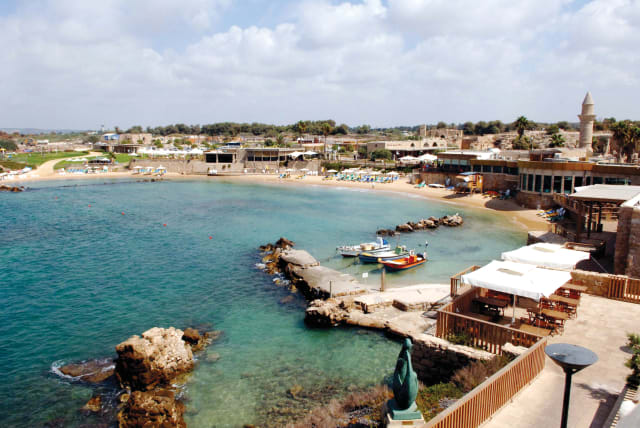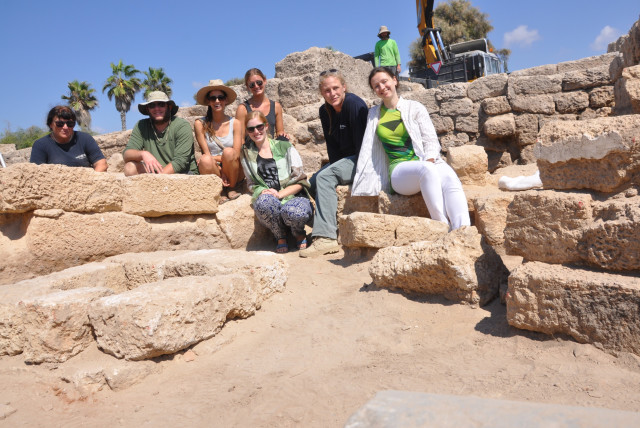Scientists uncover evidence of tsunami in ancient Israel

Understanding how previous tsunamis affected the coastline can help us plan for future tsunamis.
A tsunami destroyed early medieval Caesarea which was then rebuilt relatively quickly, according to new evidence presented by researchers at the University of Haifa in a study published on Sunday.
The research was conducted by a team from the University of Haifa School of Marine Sciences, in collaboration with the Israel Antiques Authority (IAA), and was intended to shed light on how people reacted to ancient natural disasters and to help predict future natural disasters.
The research was led by National Geographic Explorer Dr. Beverly Goodman Tchernov and Charles J. Everhardt IV of the University of Haifa and has been published in the peer-reviewed Geosciences journal.
Caesarea Maritima, the ancient city upon which modern Caesarea is built, was destroyed by a combination of factors such as reduced economic prospects and changing political climates. Still, the final nail seems to have been a giant tsunami caused by an earthquake that rocked the Levant in 749 CE.
Initially examined in the 1990s, the project was reopened by the IAA with support from the Caesarea Development Corporation in 2016 as part of current Caesarea National Park renovations.

Ancient tsunamis and modern society
“This study recognizes how coastal sites suffer from earthquakes and tsunamis. In the past 10-15 years, we’ve come to understand that tsunamis pose more of a risk than we were originally aware of," said Dr. Goodman Tchernov. "This study is the first published evidence of a tsunami deposit on land at the site.
“This study gives us very important data points for potential tsunamis that will arrive in the future. It informs us about potential risks and what we need to be prepared for. By examining a portion of the remains of a disaster of the past, it gives us a better sense of where the risk zones along the coast are.”
Understanding how previous tsunamis affected the coastline can help us plan for future tsunamis by building appropriate infrastructure, such as sea walls.
Although the ancient city Caesarea Maritima was finally destroyed by the earthquake. The site was abandoned for a short time, until several decades later when the area was resettled by the Abbasid Caliphate. Abbasid settlers rebuilt over the ruins of the ancient city preserving them, the settlers flattened much of the sand deposited by tsunami creating a clear sedimentary layer.
The residents' ability to move on and rebuild, even if decades later, is a reminder that for any society affected by a "cataclysmic" natural disaster, the most important thing is to look toward the future and that rebuilding is always possible, whether it is an individual city or an entire society and that it is the capacity of that population to respond and recover which makes the difference.
